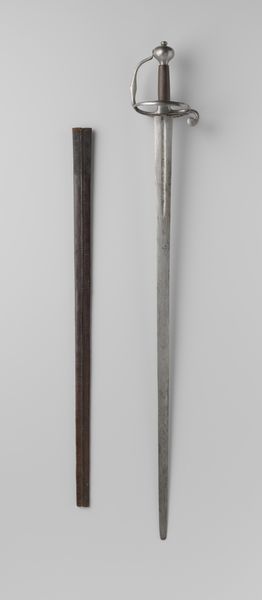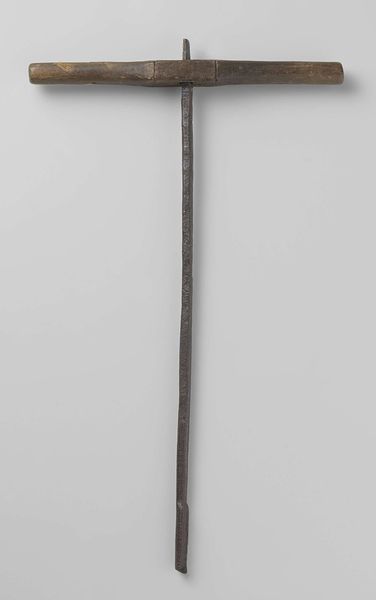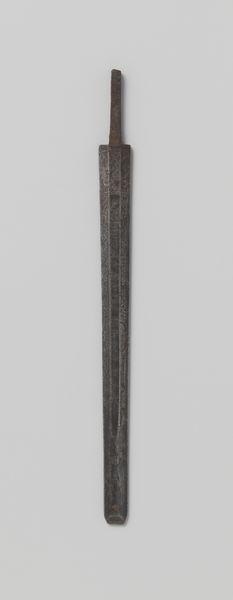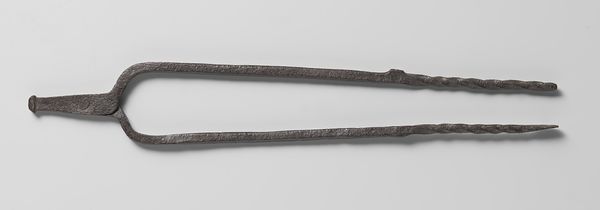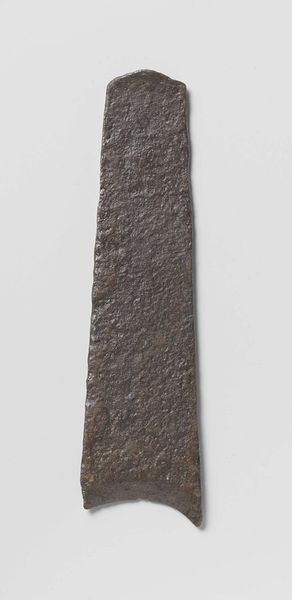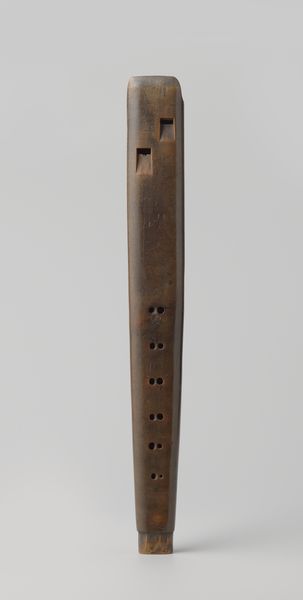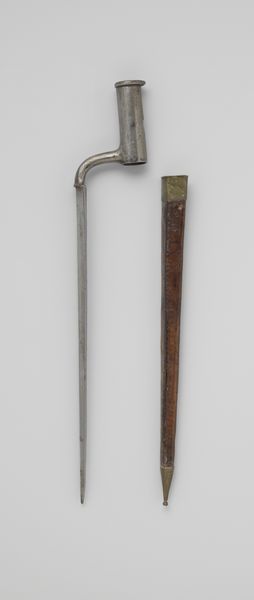
Scheepstimmermanspasser met rechte benen, een ovaal/ronde kop en geen scharnier c. 1590 - 1596
0:00
0:00
#
round shape
#
circular oval feature
#
3d printed part
#
rounded shape
#
curved arc
#
3d shape
#
round circular shape
#
regular shape
#
cut-out
#
cutout
Dimensions: length 18.6 cm, width 1 cm, diameter 1.6 cm
Copyright: Rijks Museum: Open Domain
Curator: We’re looking at a c. 1590-1596 tool held in the Rijksmuseum's collection, described as a shipwright's compass, or "Scheepstimmermanspasser," made by an anonymous hand. Editor: Immediately striking. The object possesses a kind of austere elegance, wouldn't you say? Its verticality, the linear nature, gives a sense of precision despite the obvious age. Curator: Yes, there's a directness. I am intrigued by the material. It's obviously been through much; the patination speaks volumes. How might the iron ore from which this compass was forged dictated its initial form, perhaps even its scale? And what of the maker’s workshop? Editor: The creation of this piece seems to require substantial labor—mining, smelting, the smithing itself. Was this the work of a single artisan, or a team dividing the labor? And to consider that labor, were they skilled or considered disposable hands at that time? What determined the value they brought to these functional tools? Curator: That intersection of material origin, and workshop environment, provides a tangible link to its cultural significance. Now, if we think structurally about its simple yet functional construction. The fixed legs denote a specialized purpose, something beyond general measuring, limiting the shapes one can measure—which I suspect are circular forms given ships have rounded edges. Editor: And how many ships did this create? Thinking about the repetitive movements required, it almost takes on a sculptural quality through usage and through the means of creation in hot ironsmithing, it has texture like a Rodin sculpture almost, just far more utilitarian. What sort of aesthetic criteria were shipbuilders using at that time that affected what the instrument form was in the late 1500s. Curator: Fascinating. The compass becomes almost a metonym for shipbuilding itself, representing both a craft and perhaps the geometric rationality underpinning Renaissance naval architecture. And the choice to not make this compass folding, surely a marker of it’s inherent utility for shipbuilding as an everyday tool, instead of being some sort of fine measurement apparatus. Editor: We start considering the role of craftsmanship versus industrial production in those later models, it also speaks to social stratification. It makes me think about a future exhibition looking at maritime expansion—and its legacy through the tools left behind. Curator: For me, this object highlights the beautiful relationship of form following function. Its simplicity makes us appreciate craftsmanship from another age.
Comments
No comments
Be the first to comment and join the conversation on the ultimate creative platform.



